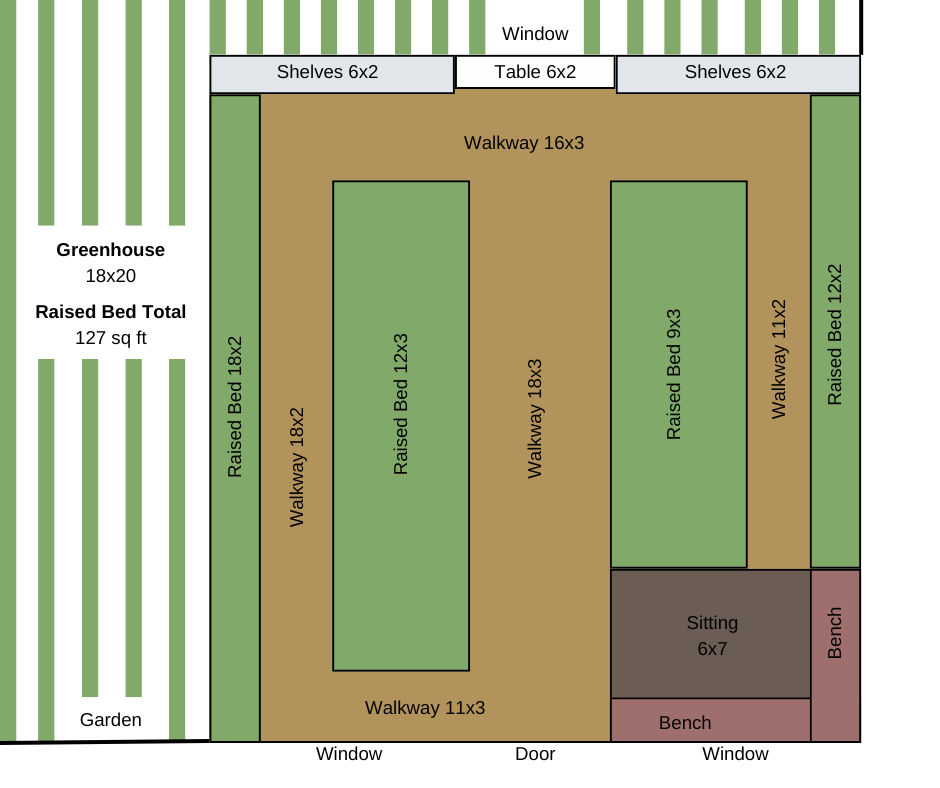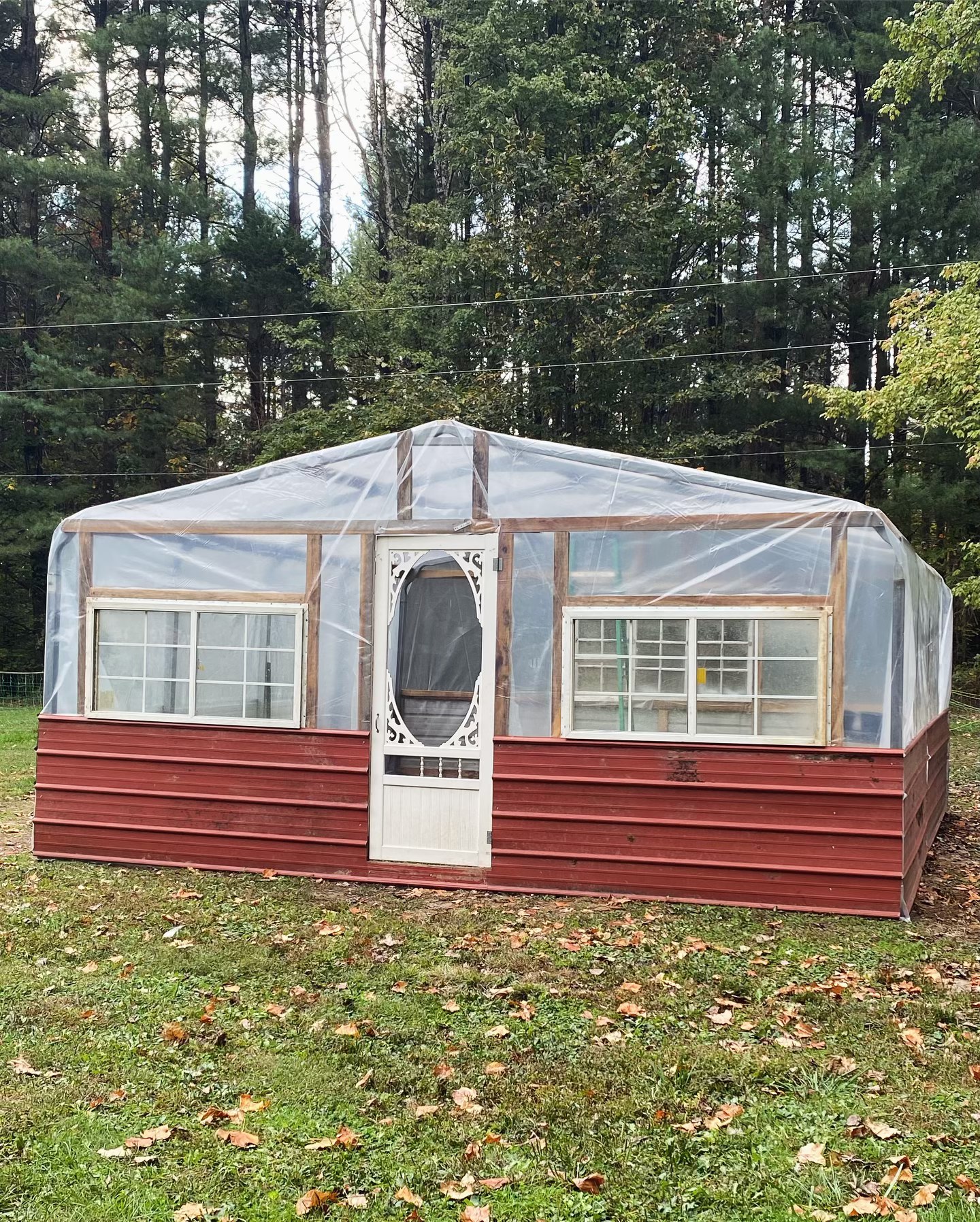We were blessed with a carport last year. After some prayer and thought we settled on turning it into a greenhouse! We had some ideas from our previous greenhouse we had in the past, at our last property. For us it’s important that when we’re designing our greenhouse, it’s in a way that draws from biblical principles. We can create a space that not only provides nourishment and beauty but also encourages reflection, growth, and connection with God’s creation. Here’s how we designed a biblically-founded garden layout for our carport greenhouse, turning our gardening space into a sanctuary of faith and growth.
A Biblical Approach to Stewardship
In the Bible, stewardship is a recurring theme—God entrusted mankind with the care of the Earth (Genesis 2:15). As you design your greenhouse, keep this principle in mind by using sustainable practices. Consider composting, using organic fertilizers, natural resources available to you and practicing water conservation. Not only will you be taking good care of God’s creation, but you’ll also be cultivating a deeper sense of responsibility and gratitude for the resources provided to you.
Assess Your Space
Before diving into design ideas, it’s crucial to assess the available space in your greenhouse. A carport often comes with a roof and open sides, providing natural sunlight and ventilation, but the layout needs to take into account factors such as:
- Size of the Greenhouse (Carport): How much space do you have to work with? Measure the dimensions and plan accordingly.
- Sunlight and Shading: Observe how sunlight moves through the space throughout the day. The amount of light each area gets will determine what types of plants will thrive there.
- Climate Considerations: If you live in a region with extreme temperatures, you may want to insulate or install shade cloth in specific areas.
- Access and Walkways: Think about pathways for easy access and movement within the greenhouse.
Maximize Vertical Space
One of the biggest advantages of a greenhouse is the ability to maximize vertical space. Since you’re working within a confined area, using the vertical height is key for both efficient plant growth and making the space feel more expansive.
Vertical Gardening Solutions
- Shelves and Racks: Install adjustable shelving units along the sides of the greenhouse to hold smaller plants like herbs, potted flowers, or seedlings. This allows you to take advantage of the height while keeping your floor space clear for larger plants.
- Hanging Planters: Hanging baskets or planters can be suspended from the roof or beams of the carport greenhouse. These are great for trailing plants like strawberries, tomatoes, or even decorative flowers like petunias and begonias.
- Vertical Plant Towers: Consider a vertical hydroponic system or plant tower to grow compact vegetables like lettuce, herbs, or peppers. These systems are space-efficient and can be a visually interesting focal point.
- Trellises and Arbors: Install trellises along the walls or even over walkways to support climbing plants such as beans, cucumbers, peas, or climbing flowers like morning glories. This utilizes vertical space while keeping your horizontal area free for other plants.
Organize Plant Zones
Dividing your greenhouse into distinct zones will help with organization, plant rotation, and care. Think of each zone as a designated area for a specific type of plant or purpose, which will help you maximize growth potential.
Functional Zones in Your Greenhouse Layout:
- Vegetable Zone: Dedicate one section to growing vegetables that require more space, such as tomatoes, peppers, and cucumbers. Consider raised garden beds for easy access and a neat, organized layout.
- Herb Zone: Herbs like basil, rosemary, thyme, and parsley can thrive in smaller spaces. Create a compact herb garden on a shelf or along the edges of your greenhouse to make harvesting easy.
- Flower Zone: Add a section for vibrant flowers to create beauty in your greenhouse. This zone could be used for seasonal blooms, perennials, or even for growing cut flowers like sunflowers, lilies, and zinnias.
- Seedling Zone: A designated space for seed trays, seedlings, and young plants is essential for early-stage growth. Use a table or countertop space near the light source so these plants can benefit from the maximum amount of sunlight during their early growth stages.
- Tropical or Exotic Plant Zone: If you’re a fan of tropical plants, you could create a humid, warmer zone within your greenhouse to house plants like orchids, ferns, or even small citrus trees. You might need to install a misting system or small humidifiers to keep the environment ideal for these plants.
Smart Pathways and Flow
When designing the layout, consider the flow and ease of movement inside the greenhouse. The goal is to allow access to every plant while maintaining a comfortable, non-cluttered space. Here’s how to do it:
Wide Walkways
- Main Path: Leave enough space for a main pathway that runs down the center of the greenhouse. This should be wide enough for easy movement and access to all plants, with enough space to get to shelves or hanging plants. A width of 2-3 feet is typically ideal.
- Secondary Paths: Depending on your layout, you can create narrower paths between plant zones, allowing access to the sides of shelves or vertical gardening systems.
- Non-Slip Flooring: Use gravel, pavers, or rubber matting for flooring to provide stable footing, prevent muddy conditions, and encourage easy cleaning.

Consider Climate Control
Even though your greenhouse offers protection from the elements, controlling the internal climate is key to keeping your plants healthy year-round. You may need to install additional climate control features such as:
- Ventilation: Install roof vents, side vents, or even automatic openers to keep the air circulating and prevent overheating, especially in the warmer months.
- Shading: Use shade cloths to protect your plants from extreme sunlight in hot climates. You can also use shades that can be pulled down during peak sun hours.
- Heating: If you’re growing delicate or tropical plants, consider using small space heaters or radiant heat mats during the colder months to maintain a comfortable temperature.
- Humidity: Tropical plants thrive in high humidity, so incorporating a small humidifier or misting system can help create the right environment for these species.
Incorporate Watering Systems
Watering your plants efficiently is crucial for a successful garden. When space is limited, opt for watering systems that allow you to keep plants hydrated without taking up too much space.
Watering Options:
- Drip Irrigation: Install a drip irrigation system that runs along the base of your plants. This allows you to water plants directly at the root while conserving water.
- Self-Watering Planters: For herbs and smaller plants, consider using self-watering planters that help regulate moisture levels while reducing the need for constant attention.
- Watering Cans & Hoses: Keep a small watering can or flexible hose handy for easy, spot watering when necessary.
In the past we’ve simply installed rain barrel catchment systems right outside the greenhouse. You can then simply fill up your watering can with ease.
Add Personal Touches
Don’t forget to make the space your own! Personalizing your greenhouse with decorative items or functional tools will make it feel like a true retreat.
- Art & Decor: Add biblical verses or inspiring quotes on the walls or create decorative plant markers. Hang up a small wind chime or prayer flag for a calming effect.
- Seating Area: Create a small seating area where you can take breaks, enjoy your garden, and even pray or reflect. A simple chair or bench with cushions can transform the space into a peaceful retreat.
Designing a greenhouse with a biblical foundation invites you to connect more deeply with both nature and your faith. By creating a garden that reflects the beauty and purpose of God’s creation, you not only tend to plants but also nurture your spiritual life. With careful consideration and intentional design, your greenhouse can become a peaceful retreat that fosters both physical and spiritual growth. Maximizing the potential of your space through thoughtful elements like vertical gardening, zoning, efficient pathways, and climate control further enhances the experience. This approach not only promotes functional growth but also creates a serene environment that thrives year-round, serving as both a productive garden and a space for relaxation. Happy gardening!

“…A person reaps what he sows.” – Galatians 6:7

Leave a Reply